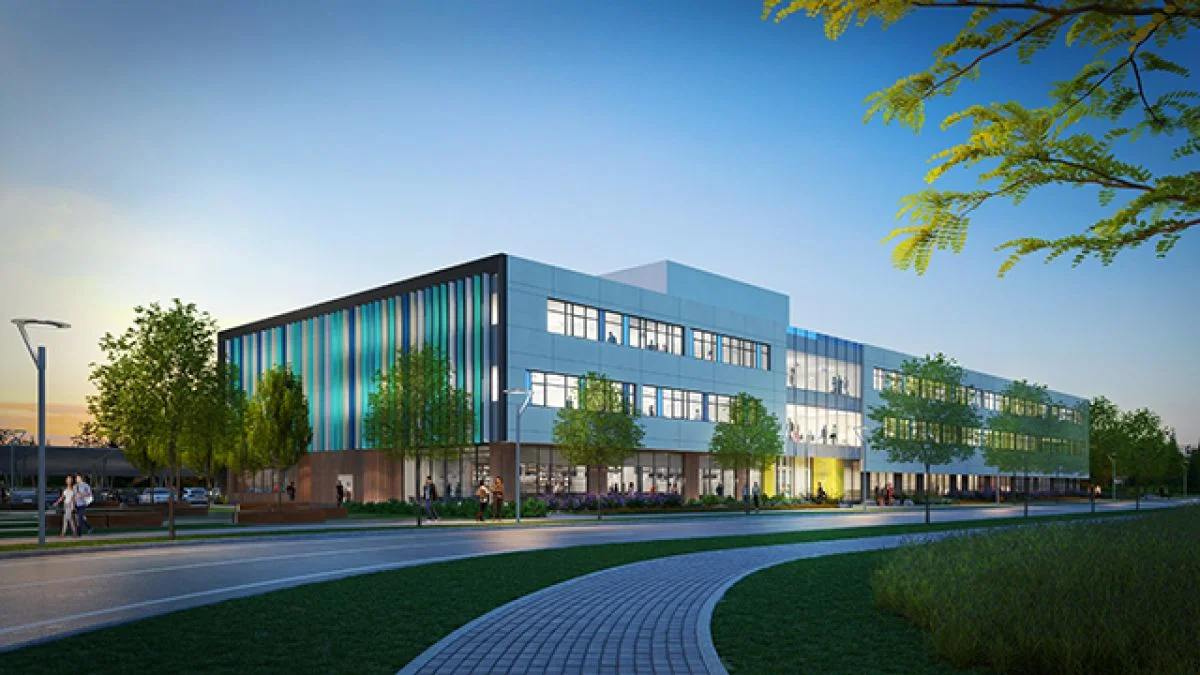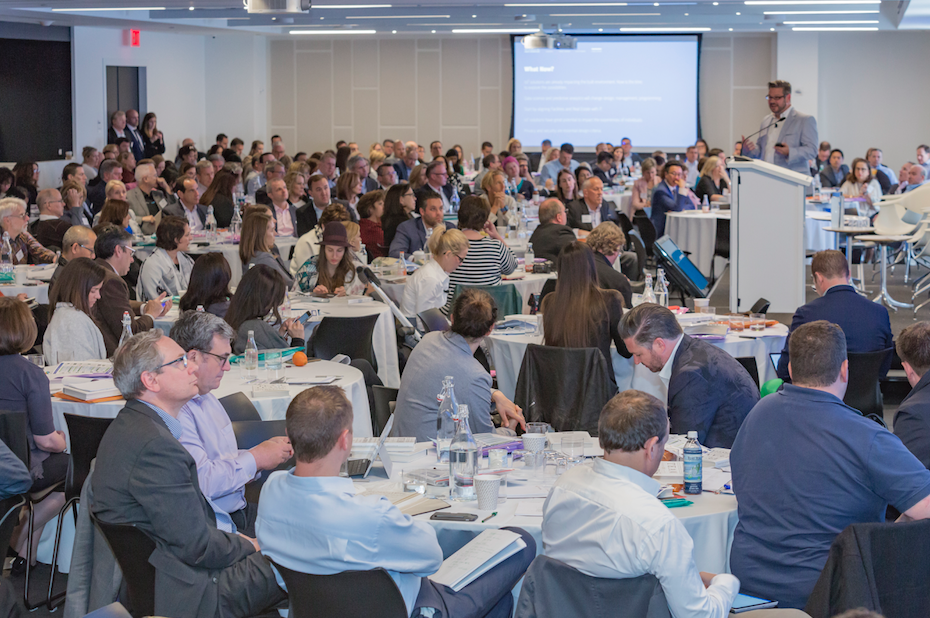Today’s ever-more competitive business arena has rendered one-size-fits-all office space obsolete. Nowadays, every work station, huddle room, and cafe can be designed to directly support flexibility, mobility, and ultimately, the employee experience as a whole. But that doesn’t mean that they have been.
When Net Positive is business plus
In a decade of working in sustainability, I’ve found that I usually face an uphill battle keeping the sustainable and energy-efficient features in building designs. Unless energy efficiency targets are mandated by law, the argument for sustainable features often comes down to doing the right thing for the planet and achieving a marketing advantage—both of which may be harder to justify for a commercial enterprise.
Global Workplace Trends: Build the “Internet of Workplace”
From the way we consume media to the way we order food, every aspect of our lives is becoming customizable — a factor that is particularly important to the millennial and Generation Z cohorts. This is one area where it’s imperative to remember that by 2022, Gen Z will be your entry-level employees and millennials will make up a significant portion of your managers and key decision-makers — and their expectations for the workplace will hold even more importance than today.
Q1 2017 U.S. Top Office Metros Snapshot: Office Markets Nearing Peaks as Rent Growth Slows
Colliers’ Q1 2017 U.S. Top Office Metros Snapshot report highlights strong rents and solid demand in some markets and challenges in others, from rising vacancies to new supply impacting West Coast markets.
America’s declining mobility has millennials feeling stuck
According to the latest data from the U.S. Census Bureau, the percentage of Americans moving over a one-year period fell to an all-time low of 11.2 percent last year (domestic migration shrunk in half since 1965). The drop is particularly prevalent among millennials. New survey data from the Pew Research Center found that 25- to 35-year-olds are relocating at much lower rates than the previous generation.
Turner & Townsend: NYC has world's highest construction costs
Turner & Townsend's 2017 International Construction Market Survey (ICMS) names New York City as the metro with the world's highest costs of construction, at nearly $354 per square foot last year.
The New York City construction industry spent $43 billion in 2016, an outlay that was partly attributable to high wages of up to $100 per hour and that represents a 3.5% increase from 2015. Turner & Townsend predicted that the city will record another increase of 3.5% in 2017.
Triple Treat: Developer transforms mid-rise into unique live-work lofts
The new e-lofts, a 200-unit complex now leasing in Alexandria, Va., owes its genesis to the smartphone. Thanks to our smartphones (and laptops and tablets) we no longer have to be tethered to our cubicles. We can work from practically anywhere. The Census Bureau says 6.8 million Americans—4.6% of the U.S. workforce—work from home. Global Workplace Analytics estimates that 20–25% of U.S. workers do so remotely part time.
Capital continues to target real estate
The first three months of the year saw the continuation of Brexit negotiations, an interest rate hike in the U.S., Dutch elections and prolonged political tension ahead of elections in France and Germany.
While threatening, this turbulence did not do much to upend markets as global investment volumes in the first quarter were roughly flat on the levels recorded in 2016.
CRE Opinion: Real Estate and Psychology? Please Have a Seat on My Couch.
You may want to familiarize yourself with the term ‘biophilia’—it can translate to a huge benefit to a company’s bottom line.
WHAT WE LEARNED AT WORKTECH 17 NEW YORK
WORKTECH 17 New York took place on May 4 at Convene’s 117 W. 46th Street location, attracting, as it’s wont to do, some of the biggest and brightest names in the workplace and technology industries to debate and discuss the future of work.
Landlords Enter the Flexible Office Marketplace
Coworking companies are capturing demand from tenants looking for short-term and flexible space, and office building owners want in on the business.
The new normal arrives for the commercial property sector
Traditionally, the two principle vectors for change in the commercial property market have been lease lengths and space standards. Both have shrunk markedly over recent years, subject to the miniaturising effects of technological and cultural change. Even so, the effects of this contraction have taken place within an existing paradigm so have been easily understood, if not always acted upon.So it has been that major property organisations such as the British Council for Offices and CoreNet have been able to produce guides and reports based on well understood principles and without challenging the business models and assumptions of developers, landlords, workplace designers and occupiers. For most the challenges remained the same, not least how to resolve the sometimes conflicting timescales of people, place, property and technology that is the defining tension at the heart of office design and management.
WATCH: CBRE and Bazaarvoice Case Study
In the growing Austin technology industry, Bazaarvoice had outgrown its current space. Its environment lacked the capacity to accommodate growth as well as support the way its people wanted to work. Culture, a critical component at Bazaarvoice, was a concern among employees who feared the future office would not capture the startup energy that defined the company’s history and values. At the same time, Bazaarvoice needed to make cost effective decisions, balancing its future space, location, and building decisions in a manner that exceeded its employees’ expectations while demonstrating prudent real estate planning.
NYC Residential Developers Edge Into The Flexible Workspace Industry
As the flexible workspace industry continues to explode, New York City condo developers seem eager to join the party. It’s of little surprise to workspace operators in the NYC market. This year alone, we’ve seen considerable developments such as WeWork’s staggering $20 billion valuation and Knotel’s $25 million Series A funding.
WeWork Moves To Take On Office Giants Like JLL And CBRE
WeWork’s new business, which it is calling Onsite Solutions, offers to create personalized co-working centers for large corporations, putting the startup into direct competition with industry giants like CBRE and JLL.
Packed Pipelines, Future Rate Hikes Are Curbing Future Optimism In CRE
Real estate economists remain optimistic that the industry will continue to grow through 2019, but certain market conditions have them tempering their forecasts.
That is according to the Urban Land Institute's spring 2017 real estate consensus forecast. The forecast, based on a survey of 53 economists and analysts from 39 global CRE firms, indicated that while industry fundamentals remain sound, a few factors have led them to be more cautious when predicting future growth.
Costs Force Law Firms Into Less Extravagant Offices
Office occupiers are reworking their real estate strategies to remain competitive and appeal to workers' changing preferences (especially as the search for qualified talent intensifies). Law firms are no exception.
The legal industry has been under pressure to implement cost-cutting initiatives, which includes reducing its second-largest expense: real estate. As of late 2016, the industry had reduced its office footprint by 22.2% from a historic average of 976 SF to 760 SF.
Office Market Swings in Tenants’ Favor
The U.S. office market became more tenant-friendly in the first quarter in many big cities as a seven-year expansion slowed.
JLL's Future of Work Enables Workplace Transformation
JLL introduced the Future of Work, its unique outlook on the changing world of work and its impact on the next generation of corporate real estate. The model is designed to highlight areas that companies should address to navigate these seismic shifts in the market: human experience, digital drive, continuous innovation, operational excellence and financial management.
Peering Into The Future Of Work: A New Model
Corporate real estate has assumed a far greater importance for today’s companies. Instead of just cutting costs, companies need a fully-realized workplace strategy to attract and retain employees, says JLL.

























